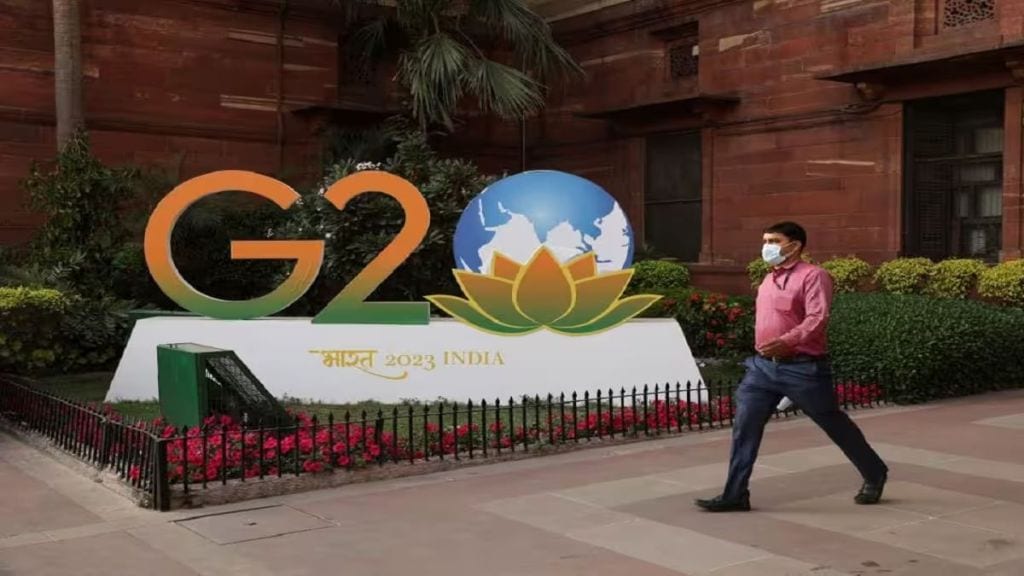By Anita Inder Singh
China’s decision to sign the G20 document could not hide the fact that the world is far from being One Family—and Delhi realised this, if only because the Sino-Indian border dispute remains unresolvable. By skipping the G20 summit, China’s president Xi Jinping highlighted his importance: US president Biden was disappointed at Xi’s decision and voiced his determination to meet him elsewhere.
Since their clashes in Ladakh in 2020 an enduring military standoff has become the norm defining India-China relations despite the strengthening of trading ties. China’s military buildup upon its frontier with India over the last three years serves as the troubled background to their verbal sparring over G20 working meetings.
Xi’s no-show, which came after he met PM Modi at the BRICS summit in Johannesburg in August, was followed by Beijing’s statements that the two countries should settle their frontier conflict. Beijing claimed that Modi had sought their meeting, which it presumably interpreted as reflecting India’s weakness against China. New Delhi riposted that China had requested the meeting.
Any Indian hopes of a deal were scuttled by Beijing’s subsequent publication of a map showing parts of Ladakh and the state of Arunachal Pradesh as China’s turf. China claims the state as ‘South Tibet’. Soon after Delhi protested, Beijing announced that Xi would not attend the G20 summit and that China would be represented by prime minister Li Qiang. The unanswerable question is whether Xi was interested in meeting Modi again.
Beijing also alleged that India had used preliminary G20 meetings against China. In May, China stayed away from a G20 tourism working group meeting held in Srinagar. So did Saudi Arabia, with which India, together with the US and European Union (EU), has been discussing a railway in the Middle East as an alternative to China’s Belt-and-Road Initiative. India is standing on shaky ground since China has already built the first high-speed electrical railway in Saudi Arabia to carry some 60 million passengers annually. The 450-km railway is the largest transport project in the Middle East, and serves 60 million passengers, including millions of Muslim pilgrims annually, through its 35 trains. In 2022, China-Saudi trade and investment ties stood at $106 billion, and India-Saudi trade ties to $52 billion. Recent US, EU and Indian attempts to cultivate Riyadh therefore look like second thoughts.
The sparring continued in August at a G20 meeting in Arunachal Pradesh. India then accused China of setting debt traps for countries turning to it for economic help. An angry Beijing lambasted both the G20 working group meetings as being anti-China. These exchanges do not explain China’s acceptance of the final document’s compromise language (para 54) about easing the debt vulnerability of developing countries, except in the sense that Beijing did not want to push India closer to the West.
The problem? Some consensus on using the G20 as a forum for development cannot mask differences over other G20 issues, including climate change. And China will strongly contest India’s claim to be the do-gooder to the developing world. In fact, the situation on the ground encourages little optimism. Since 2020, China has established “zones of disengagement” in areas previously under India’s control. But such zones could become a de facto Line of Control. This would be analogous to China’s land grabs in the South China Sea or in territorial quarrels with Taiwan.
Does Delhi understand China’s ambition and its refusal to treat India as a peer? Even a cursory reading of official Chinese statements reveal that China seeks to dislodge the US as Asia’s primary power and achieve pre-eminence itself. If Delhi were to kow-tow to this idea because of India’s economic weakness relative to China, it would implicitly accept a secondary status in Asia. That would signify that its aspiration to become an outstanding Asian power was a pipe-dream.
Then, there is the Russia factor. Russia, China and India do share a vision of multipolarity, normally desired by any power which wants to avoid dominance by the sole superpower. But the “no-limits partnership” between China and its junior partner, Russia, could work against India. For all Delhi’s rhetoric about the “unbreakable bond” between India and Russia, both countries have frequently viewed each other as unreliable. Additionally, since Russia invaded Ukraine in February 2022, its unreliability as an arms supplier has been recognised by India’s military. That is one reason why Delhi is buying more weapons from France and America. Some economic decisions also explain India’s stance. In June, the US and India resolved six trade disputes at the WTO. In May, India and the US announced their Initiative on Critical and Emerging Technology.
From their side, in March, Xi and Russia’s Vladimir Putin jointly opposed the use of multilateral platforms like the G20 to raise what they labelled as “irrelevant issues” like Ukraine. The final G20 document reflected some compromise with the Chinese and Russian positions to prevent Moscow from carrying out its threat to block any joint statement that did not cater to imperialist Russia’s interest in presenting a good international profile.
In the long run, both a global issue like ‘Ukraine’ and the bilateral Sino-Indian divide call into question the G-20’s ability to collaborate on international challenges, including the promotion of world trade, climate change and debt restructuring.
Anita Inder Singh, Founding professor, Centre for Peace and Conflict Resolution, New Delhi. Views are personal.

